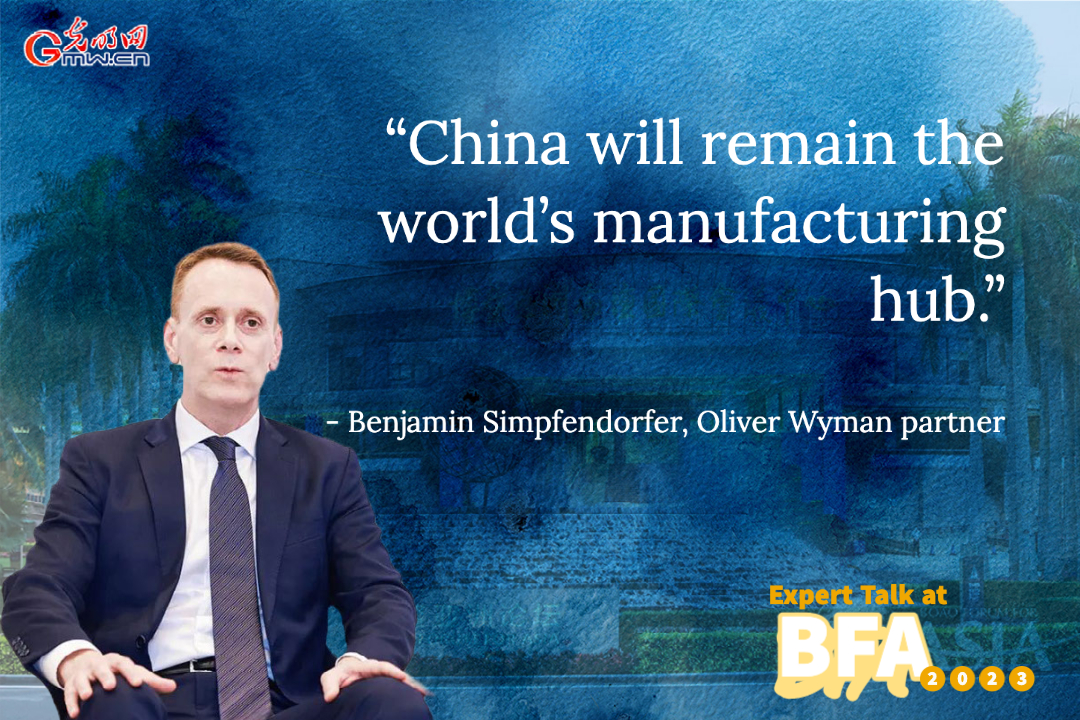


BOAO, Hainan, March 30 (Guangming Online) -- On the afternoon of March 28, a session on “New Landscape of Industrial and Supply Chain” was convened during the BFA Annual Conference 2023. Ben Simpfendorfer, a partner at Oliver Wyman, talked about how to build resilience in supply chain and the trend of regionalization. The essence of commercial collaboration in the global economy is a win-win scenario, especially at the multilateral level. This is fundamental for future development. Regionalization will also be a fundamental and important trend-going forward.
Simpfendorfer pointed out that the global supply chain is efficient but fragile. Global trade accounted for 50% of global GDP in the year 2000 but has since decreased to 45% in the past decade. This calls for reflection on the inevitable formation of the global supply chain. Risks such as climate change, pandemics, and geopolitical issues are the drivers for multinationals going forward. Therefore, it is necessary to enhance the resilience of the industrial and supply chain to meet external challenges.
Simpfendorfer remarked that multinationals have three strategies to improve the resilience of the global supply chain. The first strategy is to invest in China’s supply chain, where factories are supplied to China’s customers. The second strategy is to derisk the supply chain by relocating a share of production to other markets such as Vietnam, India, and Indonesia. This strategy is called “China plus one”, which many global companies have adopted and been implementing for the past decade. The third strategy is to shift critical strategic component parts back into home markets. It is not a zero-sum game, instead, it’s a win-win scenario where commercial collaboration lies.
According to Simpfendorfer, China will remain the world’s manufacturing hub. 80% of smartphone exports come from China, and though the figure may decline slightly, no other market has the same speed and scale as China. Most of the production leaves China to Vietnam, which accounts for 9% of global export share of consumer electronics, 6% of computers and 5% of furniture. While these are not small shares as sizeable numbers, the production is particular. The movement in heavier goods, such as white goods, have been transferred to Mexico and Poland for production to reduce transportation costs. This trend will continue, but it will take more than a decade for Southeast Asia to become a manufacturing hub like China, and it will also require more time in Europe and North America.
点击右上角![]() 微信好友
微信好友
 朋友圈
朋友圈

请使用浏览器分享功能进行分享
